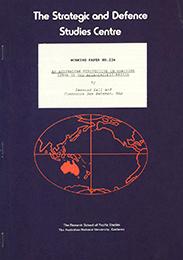At the beginning of First World War the new Royal Australia Navy (RAN) was ill-prepared and ill-equipped to counter a mining campaign in home waters. Following German mining in 1917, the RAN quickly requisitioned trawlers as auxiliary minesweepers crewed by the RAN Brigade, and the mines were ultimately swept.
Both Germany and Japan laid offensive mines in Australian waters during the Second World War. This stretched the RAN minesweeping effort to the limit. However, safe channels were quickly established and the movement of traffic, including vital troopship convoys, was not impeded.
The little known operational minesweeping in China and in the Southwest Pacific Islands after the Second World War, in arduous and difficult conditions, was a major feat.
Defensive minefields, totalling some 9 000 Australian-made mines, were laid in 1941 to 1943 by HMAS Bungaree, mainly in the Great Barrier Reef. This required a significant post-war clearing operation. One minesweeper sunk after hitting a mine.
Australian Minesweepers at War covers RAN bomb and mine disposal activities both in Australia and in support of the Allied offensives in the Pacific.
The book outlines for the first time the significant effort of the RAN’s minesweeping forces, which quickly established an expertise in this form of warfare and ensured that the sea lanes remained navigable throughout both wars. The Australian designed and built minesweepers proved their effectiveness in the major sweeping operations during and after the Second World War.
Australian Minesweepers at War is possibly the most comprehensive volume of its type now available... Its detailed descriptions and technical knowledge is a great credit to the authors and it is both interesting, covering a critical aspect of naval history, and an important book of reference.
Read the full review of Australian Minesweepers at War.
About the authors
Mike Turner
Mike Turner graduated from Sydney University with a degree in science and
a second class honours degree in aeronautical engineering. Recruited by the
Department of Navy in 1957 he passed a RAN Ship’s Diver course. He
then joined the RAN Mine Countermeasures Development Unit (MCDU) at
HMAS Rushcutter as an experimental officer for the development of a towed
diver search system.
Transferring ‘next door’ to the RAN Experimental Laboratory in 1960, Mike
expanded his activities into explosive ordnance disposal (developing the
Australian Mine Identification System with Chief Petty Officer CD ‘Dixie’ Foord
BEM RAN) and countermeasures against underwater saboteurs (inventing the
‘half-necklace’ ship’s diver search for limpet mines and a towed obstruction to
deter underwater saboteurs). Eventually he had worked in just about all areas of
MCM, including the observation and analysis of multi-national MCM exercises.
In 1988 he was presented with the inaugural Ministers Award for Achievement in
DSTO. This award was for his development of equipment, particularly Dyad
permanent magnet sweeps, which enabled the RAN to use ‘Craft of Opportunity’
as minesweepers. Mike retired in 1990 as a Principle Research Scientist and
became a consultant on MCM to ADI Ltd in 1992.
Hector Donohue
Hector Donohue joined the Navy in 1955 and subsequently sub-specialised
as a clearance diver and torpedo and anti-submarine officer. In the course of
exchange service in the Royal Navy (RN) he served as squadron mine countermeasures officer
and executive officer of the RN’s first operational minehunter, HMS Kirkliston.
During his career in the RAN, he commanded two major fleet units, HMAS Yarra
and HMAS Darwin, and had wide experience in the policy and force development
areas within Defence, achieving the rank of Commodore.
In mid 1991 he resigned to accept a position with ADI as general manager of a
business unit involved in the development, marketing and sales of an Australian
designed minesweeping system. He achieved sales both in Australia and a
number of overseas countries.
He joined Tenix in 1997 as general manager strategic and business development
and was involved in the expansion of Tenix into a broad based defence company
as well as pursuing major business opportunities. He was a consultant with Hub
Consulting from early 2009 and retired in 2012. He holds a BA from University of
Canberra and a MA (Hons Class 1) from UNSW. He was made a Member of the
Order of Australia (AM) in 1991.




